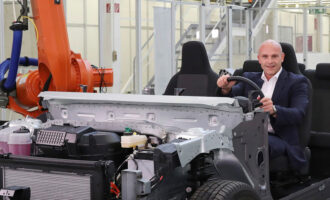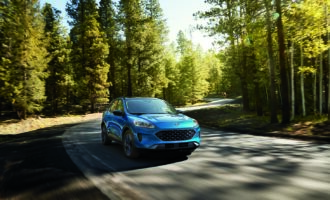Total deploys latest technologies at Singapore lube plant
Total Oil Asia Pacific’s newest and largest lubricant blending plant, located on reclaimed land in Singapore, was inaugurated on July 3 by Teo Chee Hean, deputy prime minister of Singapore, and top Total executives.
With a capacity of 310,000 metric tonnes per year, using a production area of merely 14,000 square meters (sq. m.), the plant was lauded by Teo for raising productivity by 300%. With its limited land area and perennial labour shortage, Singapore’s push is for greater productivity using less manpower on limited space.
“Total has deployed the latest automation technologies in this new plant, to bring about a step change in productivity,” said Teo. “In the past, five workers were required to operate a filling line that produces 160 drums per hour. Today, automated filling lines only require two workers to produce 250 drums per hour. This is a significant increase of almost 300%, and is aligned with Singapore’s efforts to improve productivity.”

Located in the Singapore Lube Park in Tuas, the only such park in the world, Total shares tanks and a jetty with two of its competitors, China’s largest oil refiner Sinopec and international oil and gas giant Shell. So far, only the Sinopec and Total plants are operational.
The state-of-the-art plant boasts many firsts. It is thefirst two-storey lube blending plant in the world, with the warehouse and the blending facilities on the ground floor, and the filling and packaging lines on the second. Aided by robots, empty bottles are brought to the second level to be filled, capped, labeled and boxed, after which another robot delivers the filled bottles to the lower level to be palletised. Another unique feature of the plant is the use of Automated Guided Vehicles (AGV), which replaced five traditional forklifts and five operators.
The plant was completed in 19 months and 1.3 million man-hours, with an average of 750 workers a month. The entire land area of the plant is 53,018 sq. m. and the builtup area is 28,500 sq. m., including dedicated tankage and loading stations. Total invested USD 155 million in this plant. “Singapore was an obvious choice. Its strategic position, its business-friendly policies and its superb logistics infrastructure make it the best location for Total to drive our growth in the entire region,” said Francois Dehodencq, senior vice president of Total Marketing & Services Asia- Pacific.
He said the plant will supply 27 countries in the Asia- Pacific region, and will produce the entire gamut of Total lubricant products, including automotive, industrial and marine.
It will replace Total’s two existing plants in Singapore, located in Pandan and Pioneer, which combined have 160 employees producing 180,000 metric tonnes of lubricants annually. The new plant in Tuas can produce 120,000 litres per hour and 250 drums per hour. The new facility employs 100 workers, despite producing 30% more products.
With the new plant, Total hopes to capture new growth opportunities in the region, which Tan Pai Kok, vice president lubricants, marketing & services Asia-Pacific, placed at around 1.7% per year.
Total executives said the impetus for building the new plant is to expand capacity, having maxed out capacity at its two older plants, as the company is “growing faster than our competitor.”
The French company said 75% of its global lubricant production is sold outside Europe today, and Asia represents one-third of its total sales volume. It has five main logistics hubs, including Singapore. Although global lubricant demand growth is slower than previously expected, “we think it will grow 0.6-0.7% for the next 10 years,” according to Philippe Charleux, Total’s vice president for lubricants.
He said Total is looking at doubling its volume in Asia- Pacific by 2025, by which time Asia-Pacific is expected to represent 40% of the total global lubricants market. “Europe will be less because the market is shrinking even though we are growing in market share.”
Total is ranked the ninth largest lube company in Asia- Pacific, “because there are a lot of national oil companies in Asia-Pacific who are very strong,” said Tan.
“Moving forward, we should be on the top of the second tier, positioned between fourth and seventh,” Tan added.







